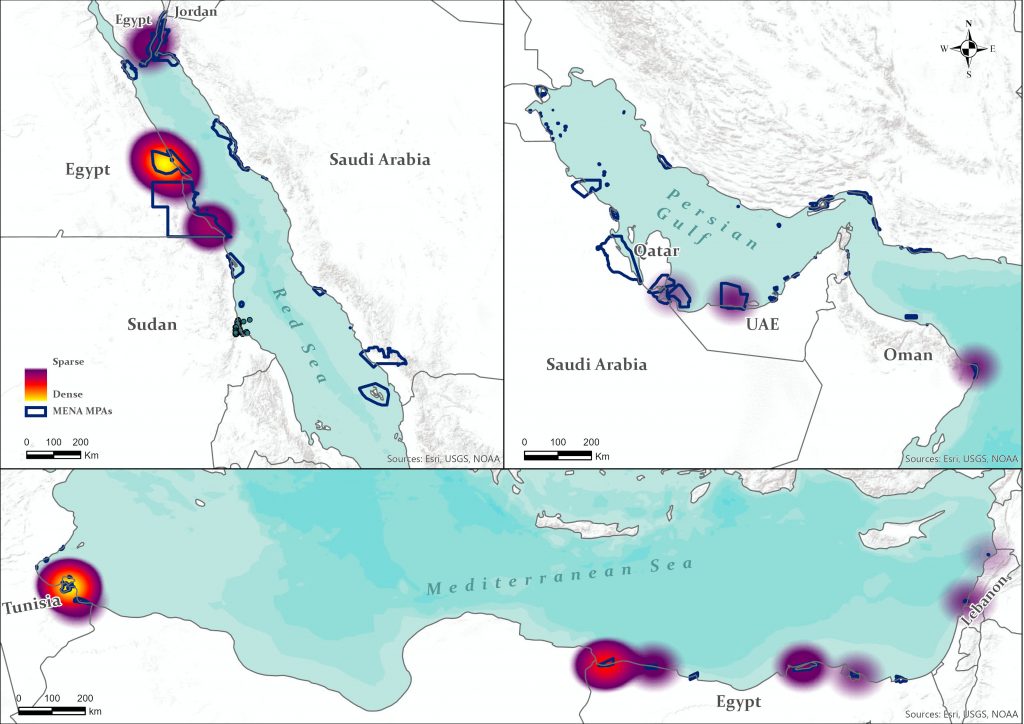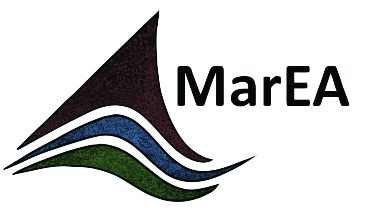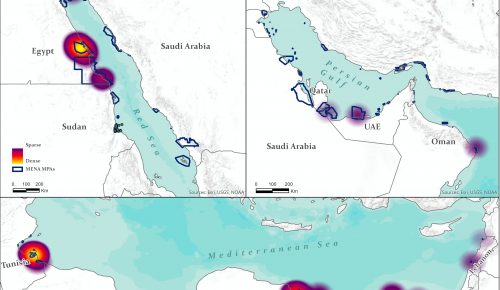By Colin Breen and Crystal Safadi
Over the past two decades, Marine Protected Areas (MPAs) have emerged as one of the primary legislative initiatives used to protect the marine environment. Additionally, they are recognised as being an integral management mechanism used to address Climate Change, and can be a driver for sustainable community development. To date, these areas have been used primarily to protect the natural environment, but there is both a clear justification and need to integrate cultural heritage into this network of sites to a far greater extent. This may involve the reframing of existing management frameworks to take more cognisance of the cultural heritage resource, or the extension of existing MPA boundaries to include material or built heritage. MarEA is currently involved in a programme of engagement with MPA networks to examine implementation strategies around these themes.
MPA
IUCN (1994) has defined a protected area as “An area of land and/or sea especially dedicated to the protection of biological diversity, and of natural and associated cultural resources (and features), and managed through legal or other effective means”. There are developing global networks of MPAs which IUCN has promoted to ‘provide for the protection, restoration, wise use, understanding and enjoyment of the marine heritage of the world in perpetuity through the creation of a global, representative system of marine protected areas and through the management in accordance with the principles of the World Conservation Strategy of human activities that use or affect the marine environment”. (General Assembly Resolution 17.38 (1988), reiterated in General Assembly Resolution 19.46 (1994). There is a pressing need to integrate cultural heritage into these networks in the context of increased threats to the cultural heritage resource from climate and environment change, and increased anthropogenic pressures from industry, coastal development, pollution and fishing.
A number of primary benefits of MPAs can be identified following MPA designation. These have traditionally been centred on natural heritage, but are equally applicable to cultural heritage.
- Climate Change mitigation –protection and restoration of systems, saltmarshes and seagrasses, are important carbon sinks
- Conservation of biodiversity, especially critical habitats of threatened species;
- Protection of attractive habitats and species on which sustainable tourism can be based;
- help maintain viable fisheries
- Sustainable blue-green economy
MPAs and Cultural Heritage
From a cultural heritage perspective, there are clear benefits in terms of enhanced protected and more sustainable management of the resource, but a number of socio-economic benefits can also be identified.
- enhanced protection for cultural heritage resource, embedded within wider integrated practice
- Culture and nature based tourism
- Educational or aesthetic experiences
- Cultural identity
A range of benefits and incentives for communities to become involved with the designation and support of these areas have been identified. Masud et al (2017) have demonstrated that the primary motivating factors for communities to become involved in eco-tourism and MPA management are for an increase in environmental knowledge for sustainable development, perceived socio-economic and cultural impacts in Malaysia. While MPA designation has traditionally focused on natural heritage, there is increased research focussing on the underwater cultural heritage resource within these areas. There is also a recognition that the declaration of underwater reserves can also primarily focus on its heritage resource. Recent archaeological research in Italy has revealed significant archaeological remains within the boundary of the Porto Cesareo Lecce MPA (Alfonso 2012), and in the underwater park at Gaiola (Simeone 2012). In Scotland historic marine protected areas (historic MPAs) are the way that ‘marine historic assets’ of national importance which survive in Scottish territorial waters are protected under legislation. HES define the purpose of historic MPAs is to preserve marine historic assets of national importance. Planning permission and marine licence s may be required for some types of work and other activities within historic MPAs.

From a broader socio economic perspective, MPAs in southern Europe generate an estimated €640,000 per MPA in income to industries that provide services to non-resident recreational users (Roncin et al., 2008). MPAs can also offer improved opportunities for research and education by ensuring long-term conservation of marine species and features and through ecosystem services. Fletcher et al. (2014) found that the most frequently mentioned cultural ecosystem service provided by the Black Sea was related to cultural heritage and identity. A healthy environment is key to many important elements of culture, including aesthetic appreciation, identity and spirituality. For example, some respondents’ fathers had been fishermen, which created a sense of identity and interaction with the Black Sea. There is also a lot of traditional Turkish poetry, songs and dancing related to the Black Sea and its fish. Pike et al. (2010) investigated the social value of MPAs in the UK. They concluded that a range of factors influence the social value was linked to a sense of place, and the emotional connection people have to their environment. The extent of community engagement was a key factor in the success of an MPA, and the associated level of research and educational dissemination further enhanced its value. Further, an EU report concluded that overall welfare benefits of MPAs exceed their total costs (EASME EC 10.2826/40733).
MarEA and MPA
The MarEA project is currently mapping the cultural heritage resource within the MPA network across the MENA region. It is further examining ways by which existing boundaries could be extended to facilitate greater inclusion of coastal heritage, and areas of potential for future designation and protection. Through a series of case-studies, MarEA will explore the regional context for the integration in the protection and management measures of cultural and natural heritage, and how this can be embedded in and/or foster local efforts and initiatives.
For further information contact: email: marea@soton.ac.uk
References:
EASME EC Executive Agency for Small and Medium-sized Enterprises (European Commission) , ICF Consulting Services Limited , IEEP , PML 10.2826/40733 https://op.europa.eu/en/publication-detail/-/publication/85897a77-b0c7-11e8-99ee-01aa75ed71a1/language-en/format-PDF/source-search
Fletcher, R., Baulcomb, C., Hall, C., and Hussain S. (2014) Revealing marine cultural ecosystem services in the Black Sea. Marine Policy, 50, 151–161.
Pike K., Johnson D., Fletcher S., Wright P., and Lee B. (2010). Social Value of Marine and Coastal Protected Areas in England and Wales. Coastal Management, 38: 412-432.
Russi D., Pantzar M., Kettunen M., Gitti G., Mutafoglu K., Kotulak M. & ten Brink P. (2016). Socio-Economic Benefits of the EU Marine Protected Areas. Report prepared by the Institute for European Environmental Policy (IEEP) for DG Environment


